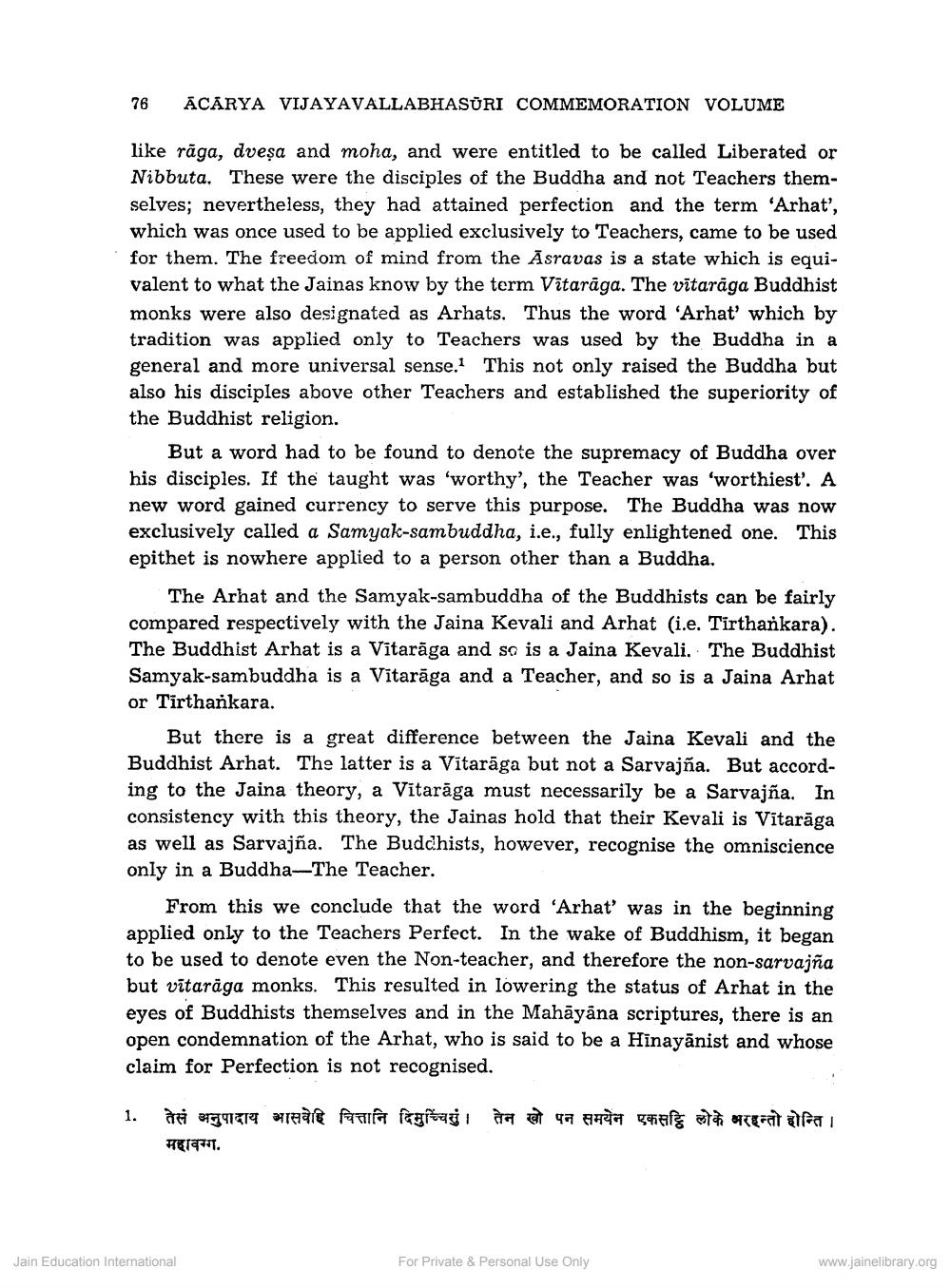________________ 76 ACARYA VIJAYAVALLABHASURI COMMEMORATION VOLUME like raga, dvesa and moha, and were entitled to be called Liberated or Nibbuta. These were the disciples of the Buddha and not Teachers themselves; nevertheless, they had attained perfection and the term 'Arhat, which was once used to be applied exclusively to Teachers, came to be used for them. The freedom of mind from the Asravas is a state which is equivalent to what the Jainas know by the term Vitaraga. The vitaraga Buddhist monks were also designated as Arhats. Thus the word 'Arhat which by tradition was applied only to Teachers was used by the Buddha in a general and more universal sense. This not only raised the Buddha but also his disciples above other Teachers and established the superiority of the Buddhist religion. But a word had to be found to denote the supremacy of Buddha over his disciples. If the taught was 'worthy', the Teacher was 'worthiest'. A new word gained currency to serve this purpose. The Buddha was now exclusively called a Samyak-sambuddha, i.e., fully enlightened one. This epithet is nowhere applied to a person other than a Buddha. The Arhat and the Samyak-sambuddha of the Buddhists can be fairly compared respectively with the Jaina Kevali and Arhat (i.e. Tirthankara). The Buddhist Arhat is a Vitaraga and so is a Jaina Kevali. The Buddhist Samyak-sambuddha is a Vitaraga and a Teacher, and so is a Jaina Arhat or Tirthankara. But there is a great difference between the Jaina Kevali and the Buddhist Arhat. The latter is a Vitaraga but not a Sarvajna. But according to the Jaina theory, a Vitaraga must necessarily be a Sarvajna. In consistency with this theory, the Jainas hold that their Kevali is Vitaraga as well as Sarvajna. The Buddhists, however, recognise the omniscience only in a Buddha-The Teacher. From this we conclude that the word 'Arhat was in the beginning applied only to the Teachers Perfect. In the wake of Buddhism, it began to be used to denote even the Non-teacher, and therefore the non-sarvajna but vitaraga monks. This resulted in lowering the status of Arhat in the eyes of Buddhists themselves and in the Mahayana scriptures, there is an open condemnation of the Arhat, who is said to be a Hinayanist and whose claim for Perfection is not recognised. 1. तेसं अनुपादाय आसवेहि चित्तानि दिमुच्चिसुं। तेन खो पन समयेन एकसट्टि लोके मरहन्तो होन्ति / HETT+7. Jain Education International For Private & Personal Use Only www.jainelibrary.org




